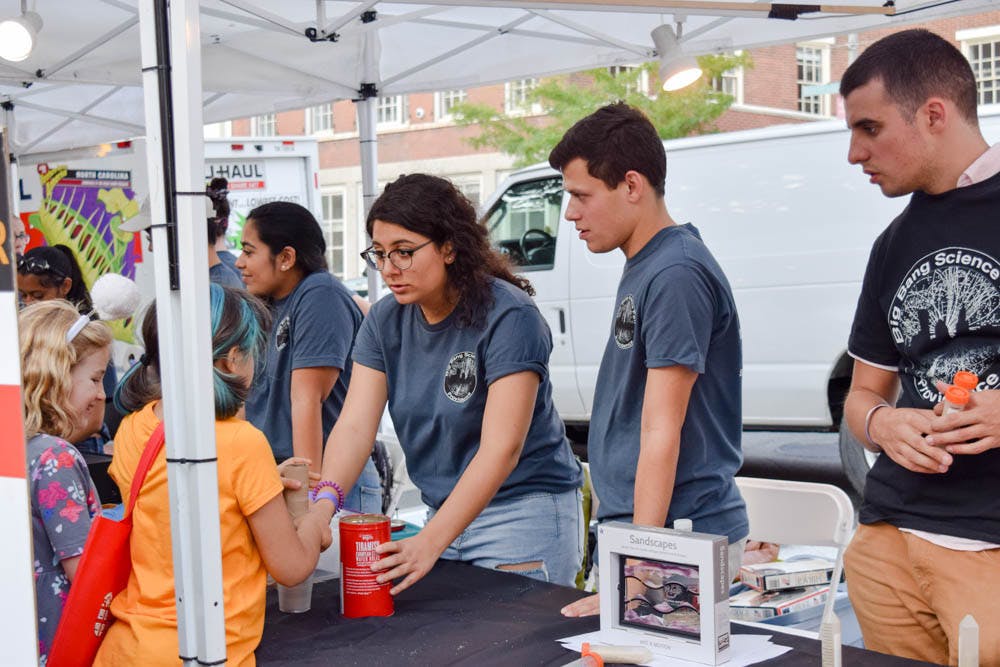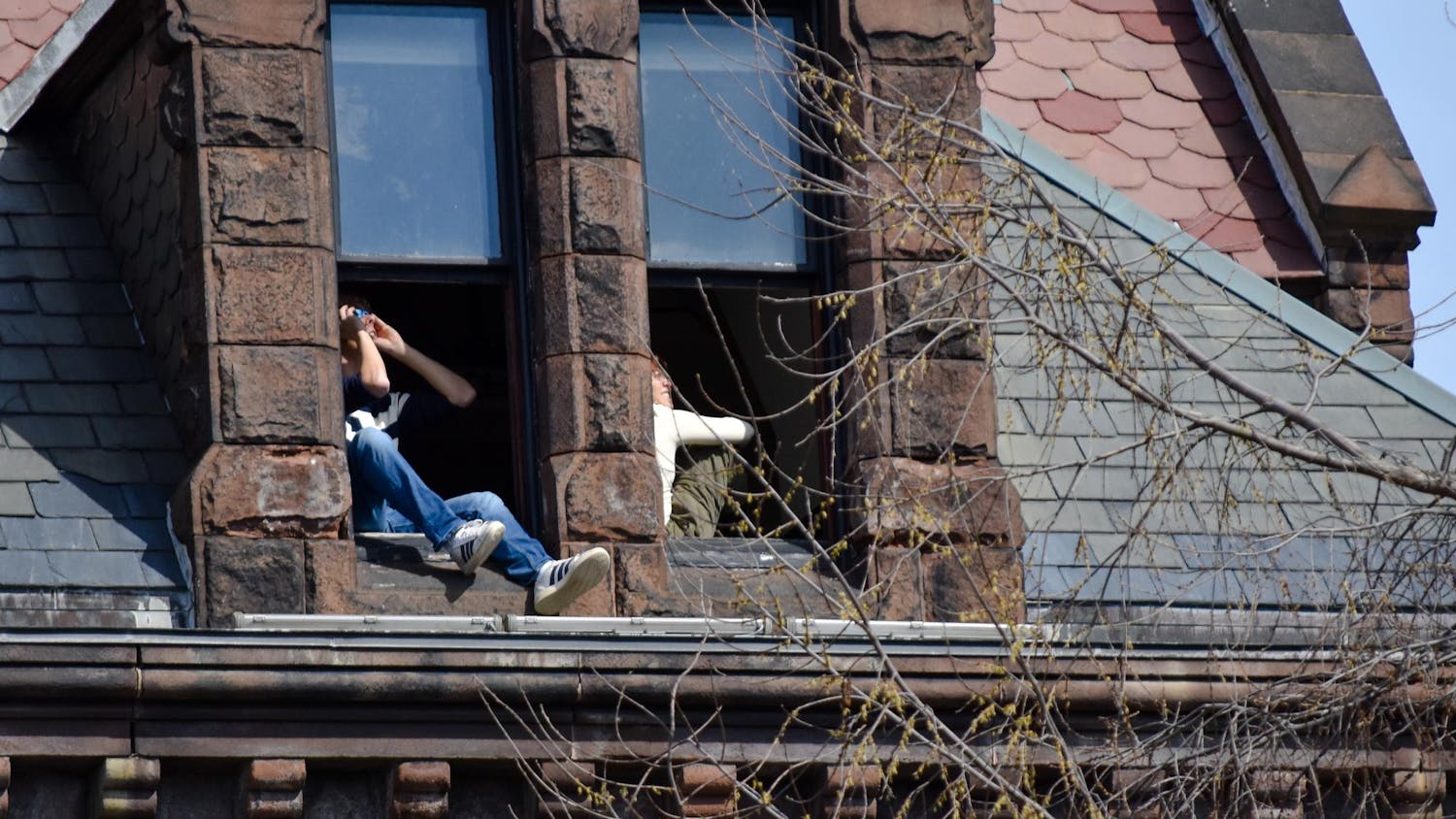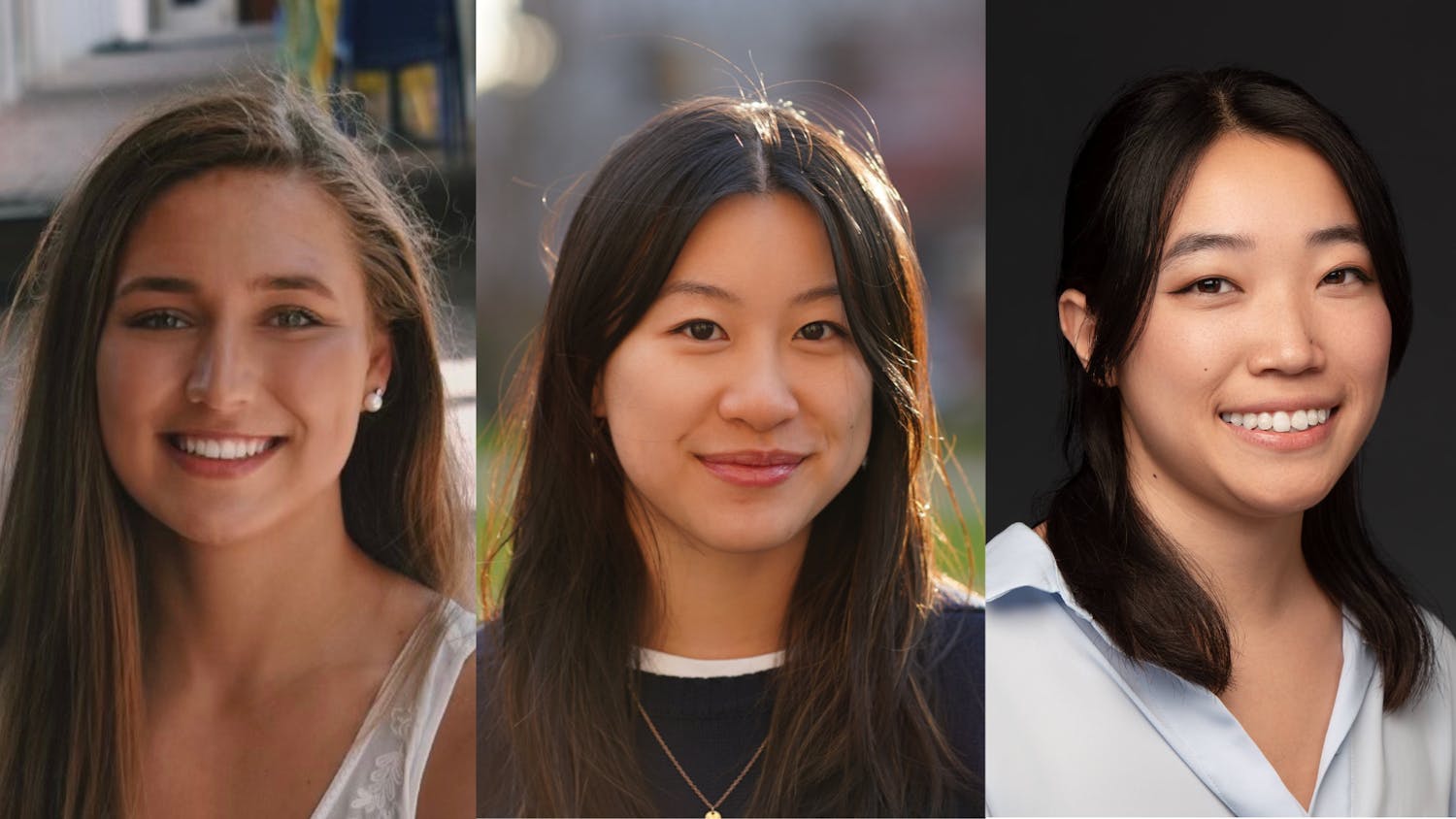Golden embers flickered and twirled, darting out of the flames that leaned over the Providence River where crowds had gathered under an assemblage of white, pop-up tents for the second annual Big Bang Science Fair late Saturday evening.
The fair, part of Providence WaterFire, featured lectures, workshops and booths with walk-up events that provided a glimpse into science, technology and medicine in combination with art. The event aimed to exhibit what these disciplines entail and how they synergize, said Meenakshi Narain, professor of physics and the event coordinator. The Big Bang Science Fair also aimed to make science accessible by bringing it to the local community.
“To accomplish my vision to have everybody understand and appreciate science, … it’s really important that we at least work with the general public and make them understand what we are doing, why we are doing it and engage them in our dialogue,” Narain said.
This year’s speakers included experts in neuroscience, physics, music and artificial intelligence, including Professor of Neuroscience John Donoghue PhD ’79, Fermilab’s Head of the Office of Education and Public Outreach Rebecca Thompson, YouTube science sensation Derek Muller, Director of the New York Theremin Society and Musicologist Dorit Chrysler and Lisa Michaud from Interactions LLC, according to the WaterFire website. The night ended on a jazzy note with a performance from the God Particle music group, Narain said.
At the fair, Donoghue addressed BrainGate — a product he helped devise with other researchers that enables people with paralysis to accomplish everyday tasks they cannot otherwise perform. For example, Donoghue described how the product can control a robotic arm to serve a latte. While the current technology has all the machinery outside of the body, aside from the electrode that senses the brain signals, the goal is to one day make another device small enough to be inserted beneath the scalp, he said.
Donoghue reflected on the importance of inspiring the next generation of scientists.
“I want to help inspire young people because this is … going to take many years of scientists, engineers and doctors working together,” he said. “I want the younger people to get to know the nature of the problem, why it’s exciting, why they should pursue careers in these areas, because this is something that can definitely really make a difference in people’s lives.”
Thompson, who has dedicated her career to teaching physics to the general public, spoke about physics in pop culture during her presentation. Using video clips from the “Game of Thrones” and science demonstrations, she explained how the fictional Valerian steel resembles real-life Damascus steel and how an ice wall would in fact flatten over time due to pressure at the base, among other references to the show. She also explained the timeless complaint about “Titanic” — why Jack did not share the floating door with Rose as the boat capsized. Mathematical calculations of buoyancy indicate that the door would have sunk if both Jack and Rose had stayed on it, Thompson said.
The auditorium was particularly packed for Muller’s presentation, which featured videos from his YouTube channel Veritasium. Muller discussed the truth behind everyday inquiries, including when people weigh the least, the direction in which water drains in different hemispheres and how trees grow by consuming the carbon people breathe out.
He concluded his talk by leaving the audience with a word of advice. “If you can find things that don’t follow what you believe to be true, that is much more powerful than finding another piece of evidence” that supports your hypothesis, Muller said.
Booth activities provided an opportunity for attendees to engage with technology in practice.
One activity allowed attendees to work a ureteroscope — a device urologists use when treating kidney stones — through the twists and turns of the inside of a human’s simulated urinary tract, said Associate Professor of Surgery in Urology Simone Thavaseelan, who oversaw this activity. The device displayed the visuals that a surgeon would see on a monitor when actually performing a procedure.
“Urology has always been a field filled with technology and rapid advancement” and the hands-on activities allowed the community to “see and engage in what we do on a daily basis,” Thavaseelan said.
Another booth featured a device from Dassault Systems, a company that utilizes software grounded in physics to create technology, said April Deady, the life sciences industry experience manager of the company. This device brought the 3D image of a healthy human heart to life on a screen. Participants could observe the rhythmic, fluid contractions of the heart and its wriggling vessels and pull it apart to examine its various pieces. This technology is currently assisting medical device companies in testing the effectiveness of heart tools, such as stents, pacemaker leads and valves, Deady said.
Anderson Addo ’23 and Shreyas Raman ’23 both attended the Big Bang Science Fair. Addo and Raman found Donoghue’s research fascinating and afterward wanted to get involved, too. “I really liked the application and everything about (Donoghue’s) talk” and found the experience insightful, Raman said. Both students had also been fans of Muller’s back in high school and looked forward to hearing his talk.
The experience also allowed Addo to “appreciate physics (as) more than just an academic thing,” he said.
A goal for this year’s fair was to increase student attendance and involvement. Computer Science for Rhode Island and Skills for Rhode Island’s Future, which both work to provide students with access to these types of learning opportunities, assisted in the outreach, Narain said.
Andrea Russo, a member of the core team of Computer Science for Rhode Island, facilitated the computer-science themed workshops. “It really is exciting to see the larger community embrace STEM,” she said, adding that she hopes that people’s engagement on Saturday will translate to increased interest in science.
Engaging people through events like the Big Bang Science Fair is “a matter of telling your story,” Narain said. “As scientists … we have to tell our story which is exciting and engaging and also connects to the real world for people.”





